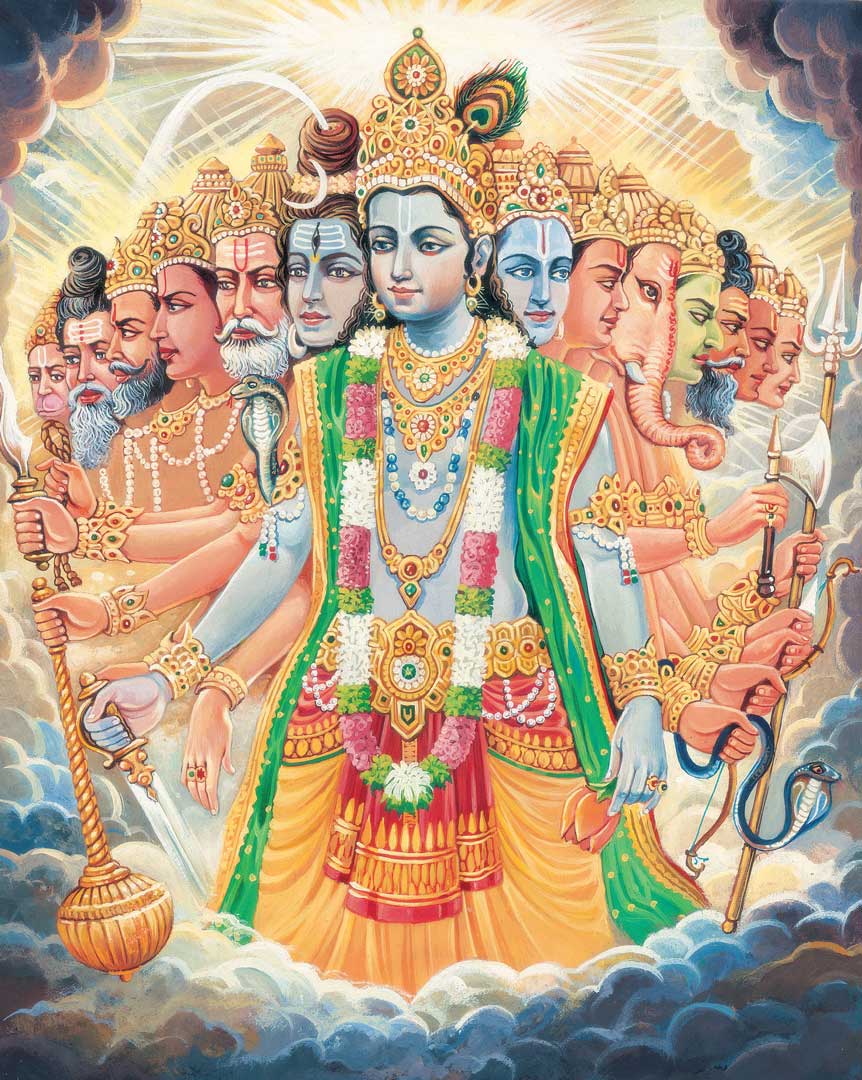

अनेकबाहूदरवक्त्रनेत्रं
पश्यामि त्वां सर्वतोऽनन्तरूपम् |
नान्तं न मध्यं न पुनस्तवादिं
पश्यामि विश्वेश्वर विश्वरूप || 16||
aneka-bāhūdara-vaktra-netraṁ
paśhyāmi tvāṁ sarvato ’nanta-rūpam
nāntaṁ na madhyaṁ na punas tavādiṁ
paśhyāmi viśhveśhvara viśhva-rūpa
aneka-bahudara-vaktra-netram
pashyami tvam sarvato ’nanta-rupam
nantam na madhyam na punas tavadim
pashyami vishveshvara vishva-rupa
BG 11.16: I see Your infinite form in every direction, with countless arms, stomachs, faces, and eyes. O Lord of the universe, whose form is the universe itself, I do not see in You any beginning, middle, or end.

Start your day with a nugget of timeless inspiring wisdom from the Holy Bhagavad Gita delivered straight to your email!
Arjun uses two vocatives—viśhweśhwar, meaning “controller of the universe” and viśhwarūp, meaning “universal form.” He implies, “O Shree Krishna, the universe is nothing but your manifestation and you are also its supreme master.” Further, he expresses the vastness of the form he is experiencing, by saying that from whichever angle he looks, Arjun cannot discern any end to his manifestations. When he searches for the beginning, he is unable to find it. When he tries to see its middle, he again gets no success, and when he searches for the end, he can find no limit to the panorama manifesting before him.